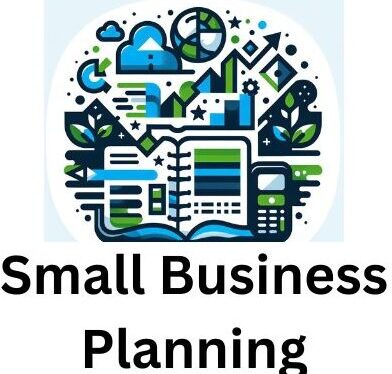
When starting a small business, one of the biggest challenges is dealing with limited capital and managing cash flow. It’s a bit like trying to cook a gourmet meal with limited ingredients. Finding the right balance between spending on essentials and saving for unforeseen costs is crucial.
Exploring funding alternatives can be a game-changer. Instead of just relying on personal savings or a traditional bank loan, consider looking into small business grants, crowdfunding, or even angel investors. Each option has its pros and cons, so weigh them carefully to find what suits your business the best.
Budget planning and financial forecasting might sound boring, but they can save your business from financial disasters. Creating a detailed budget helps in tracking every dollar and cent. Also, regular financial forecasting enables you to predict future earnings and prepares you for potential cash crunches.
Managing operating costs and expenses efficiently is another essential part. This means monitoring where every penny goes— from office supplies to utility bills. Negotiating better deals with suppliers and choosing cost-effective options can also help you save a significant amount.
Keeping accurate financial records is not just a good habit; it’s a necessity. Proper records help in understanding your business’s financial health and are essential for tax purposes. Plus, they make it easier to secure loans or investors in the future. Good records give you a strong foundation to grow your small business sustainably.
Adapting to Market Dynamics
Understanding and analyzing market trends is crucial for small businesses. This helps in identifying emerging opportunities and potential threats. Using tools like Google Trends or industry reports can offer valuable insights into what’s happening in your market.
Being flexible to changing customer needs can set you apart from competitors. It’s not just about selling a product or service; it’s about solving a customer’s problem. Regular feedback and surveys can provide a clear picture of what your customers really want and where you can improve.
Competition assessment and positioning are key. Knowing who your competitors are and what they’re offering helps you to position your business uniquely. Differentiate your products or services by highlighting your unique value proposition. This could be anything from exceptional customer service to a unique product feature.
Utilizing market research tools can give you a leg up. Tools like SWOT analysis, PEST analysis, or customer personas help in making informed decisions. These tools give a structured approach to understanding the market environment and figuring out where your business fits.
Having a unique value proposition is the cherry on top. This tells your customers why they should choose you over others. Make sure it’s clear, concise, and compelling. Whether it’s exceptional quality, unbeatable prices, or stellar customer service, your value proposition should resonate with your target audience.
Operational Efficiency and Scalability
Streamlining business processes can be a game-changer. Simplifying workflows, automating tasks, and eliminating unnecessary steps can drastically improve productivity. Tools like project management software or Customer Relationship Management (CRM) systems can be invaluable here.
Optimizing supply chain and inventory management plays a critical role in maintaining efficiency. Keeping track of inventory levels, choosing reliable suppliers, and having a contingency plan for supply chain disruptions ensure smooth operations. Implementing just-in-time inventory systems can reduce holding costs and increase cash flow.
Adopting technology for operational efficiency isn’t just for large corporations. Small businesses can benefit from tools like accounting software, cloud storage, and communication platforms. These tools help in reducing manual errors, saving time, and improving overall efficiency.
Handling workforce management and training effectively is crucial. Happy and well-trained employees are more productive and engaged. Offering ongoing training, fostering a positive work culture, and using workforce management tools can help you get the best out of your team.
Preparing for scalability and growth should be on your radar from the get-go. This includes planning for increased demand, expanding your team, and upgrading systems. Scalability ensures that your business can handle growth without compromising quality or customer satisfaction.
Building a Strong Brand Identity
Having a compelling brand story and mission can make your small business stand out. People connect with stories, not just products. Share what inspired you to start your business and what values drive you. This emotional connection can turn casual customers into loyal fans.
Effective branding and marketing strategies are crucial. Consistency is key here—ensure your logo, colors, and messaging are uniform across all platforms. This helps in building brand recognition. Collaborate with graphic designers or branding experts if needed to create a strong visual identity.
Leverage social media and your online presence to reach a broader audience. Social media platforms like Instagram, Facebook, and LinkedIn offer powerful tools for connecting with customers. Posting regular updates, engaging with comments, and using targeted ads can help boost your visibility.
Customer engagement and relationship building are essential. Respond to customer queries promptly, seek feedback, and show appreciation. Little things, like a thank-you email or a special discount for loyal customers, can go a long way in building strong relationships.
Managing public perception and feedback wisely is vital. Monitor online reviews and address negative feedback constructively. Acknowledge mistakes and show a genuine effort to rectify them. This transparency and responsiveness can significantly enhance your brand’s reputation.

This is a really insightful article! I appreciate how you break down the various challenges that small businesses face, especially when it comes to financial planning and operational efficiency. The comparison of budgeting to preparing a gourmet meal with limited ingredients really struck me—it’s such a great analogy for managing limited resources! One question I have is about balancing operational efficiency with scalability. How can small businesses ensure they’re optimizing their current processes without making things too rigid, especially as they prepare for potential growth? Thank you for sharing these valuable insights!
When growing it is important to do it very carefully. Try to have a flexible workforce so that employees are capable of more than one function. That way adding additional employees is done only when capacity is strained. I have found that paying attention to the break even of the business is also very helpful when growing. That provides for better cost control as the business grows.
Thanks for your comment.
You’ve nailed it when you say managing cash flow for a small business can feel like trying to cook a gourmet meal with limited ingredients. That imagery is spot-on and really captures the struggle of making the most out of what you have. Have you found a specific funding option—like grants or crowdfunding—that’s worked particularly well for you or someone you know? I’d love to hear more about real experiences with different approaches.
Cheers,
Opa
My consulting clients were all fairly significant. I have experience with Angel funding but mostly with banks and SBA. Monitoring cash is always critical. Many people think that if my business is showing a profit, things are great. A business can be turning a profit and run out of money!